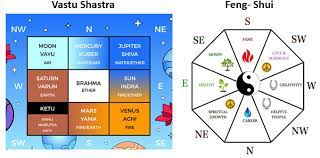Introduction
In the realm of architecture and construction, Vastu Shastra, an ancient Indian architectural science, plays a pivotal role in creating harmonious living spaces. Vastu, derived from the Sanskrit word “Vastu,” which means dwelling or building, focuses on the principles of design, layout, and orientation. It is believed that following Vastu guidelines during the construction phase of a building can influence the overall well-being and prosperity of its inhabitants. In this blog, we will explore the importance of Vastu in the construction phase and how it can positively impact the lives of those dwelling within.
The Foundation and Entrance
The commencement of any building’s construction starts with its foundation. According to Vastu principles, a robust foundation should be in a square or rectangular shape, symbolizing stability and prosperity. Likewise, the building’s entrance should be well-illuminated and inviting. A strategically placed entrance is thought to facilitate the free flow of positive energy, often referred to as “prana,” into the dwelling. For optimal benefits, Vastu recommends orienting the building so that the primary entrance faces either the east or north, as this is believed to usher in positive energies.
Room Placement
Vastu emphasizes the importance of placing different rooms within the building in specific directions. For instance:
The master bedroom is ideally placed in the southwest corner of the house, associated with stability and relationships.
The kitchen should be situated in the southeast corner, linked to the element of fire and energy.
The study or home office can be in the northeast, promoting knowledge and concentration.
By following these guidelines, the placement of rooms is thought to create a harmonious and balanced living environment.
Energy Flow and Ventilation
Vastu encourages proper ventilation and the entry of natural light. Adequate airflow and sunlight are essential for maintaining a healthy and positive atmosphere within the building. It is believed that these elements help in the removal of stagnant energy and ensure the continuous circulation of fresh air, thereby contributing to the well-being of the occupants.
The Five Elements
Vastu is intricately connected to the five fundamental elements of nature: earth, water, fire, air, and space. These elements are thought to exert a significant influence on the energy dynamics within a structure. Maintaining a harmonious equilibrium among these elements is of paramount importance. For instance, incorporating earthy color palettes, greenery, and natural materials in the interior design can establish a strong connection between the occupants and the grounding Earth element.
In terms of water resources, Vastu recommends situating all water-related appliances or features in the northeast section of the house. This placement is believed to enhance prosperity and overall well-being.
When it comes to plants, the presence of specific varieties such as Tulsi, Banana, Champa, Ashoka, and Aawla in the vicinity of the house is believed to promote the health, happiness, and peacefulness of its inhabitants.
Remedies for Imbalances
In some cases, it may not be possible to adhere strictly to Vastu guidelines during construction. In such situations, there are remedies that can help mitigate any imbalances. These may include using specific colors, gemstones, or symbols to harmonize the energy in a particular area.
Psychological Impact
While the scientific validity of Vastu remains a topic of debate, there is no denying the psychological impact of one’s living environment. A well-planned, aesthetically pleasing, and harmonious home can have a positive effect on mental and emotional well-being. The belief in Vastu can instill a sense of confidence and peace, which can contribute to a happier and healthier life.
Conclusion
Vastu in construction is more than just an ancient architectural science; it’s a belief system deeply rooted in creating spaces that foster harmony, prosperity, and well-being. While not everyone may subscribe to its principles, the psychological and aesthetic benefits of following Vastu guidelines in construction are undeniable. Ultimately, whether you are a staunch believer or a skeptic, the fundamental goal of Vastu aligns with creating living spaces that support and enhance the quality of life for its inhabitants. In the end, a well-constructed, balanced, and harmonious home is something we can all appreciate, irrespective of our beliefs.




